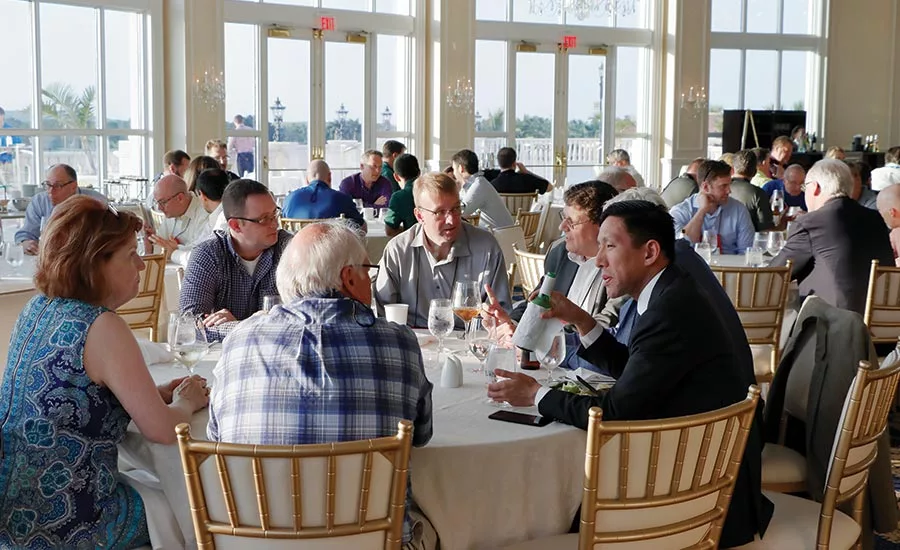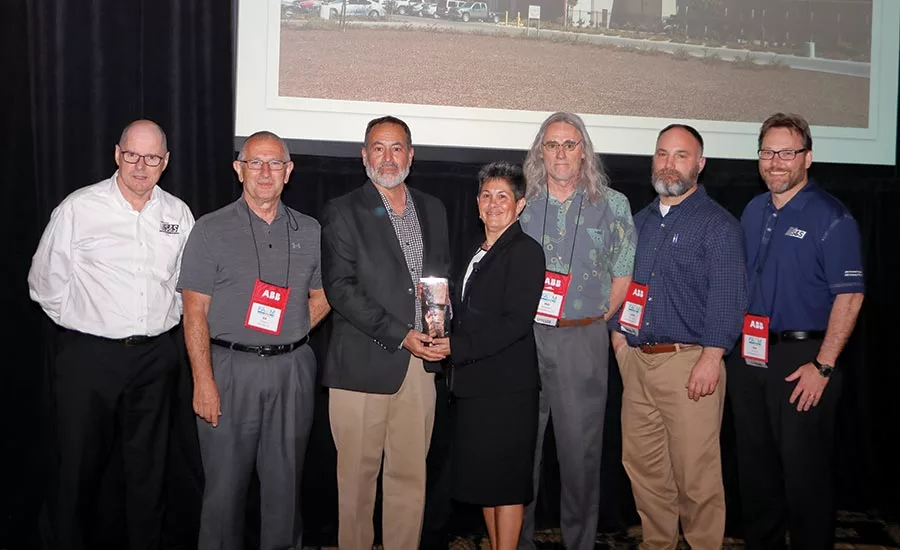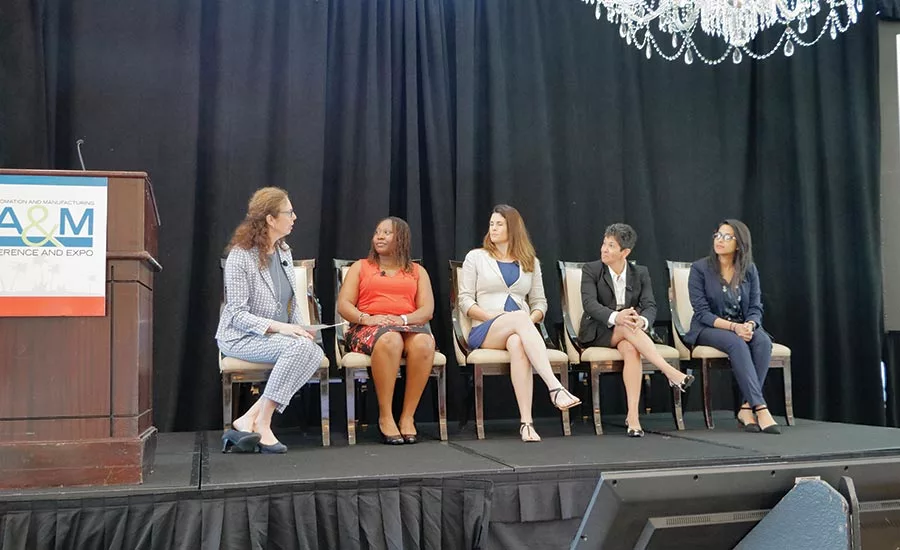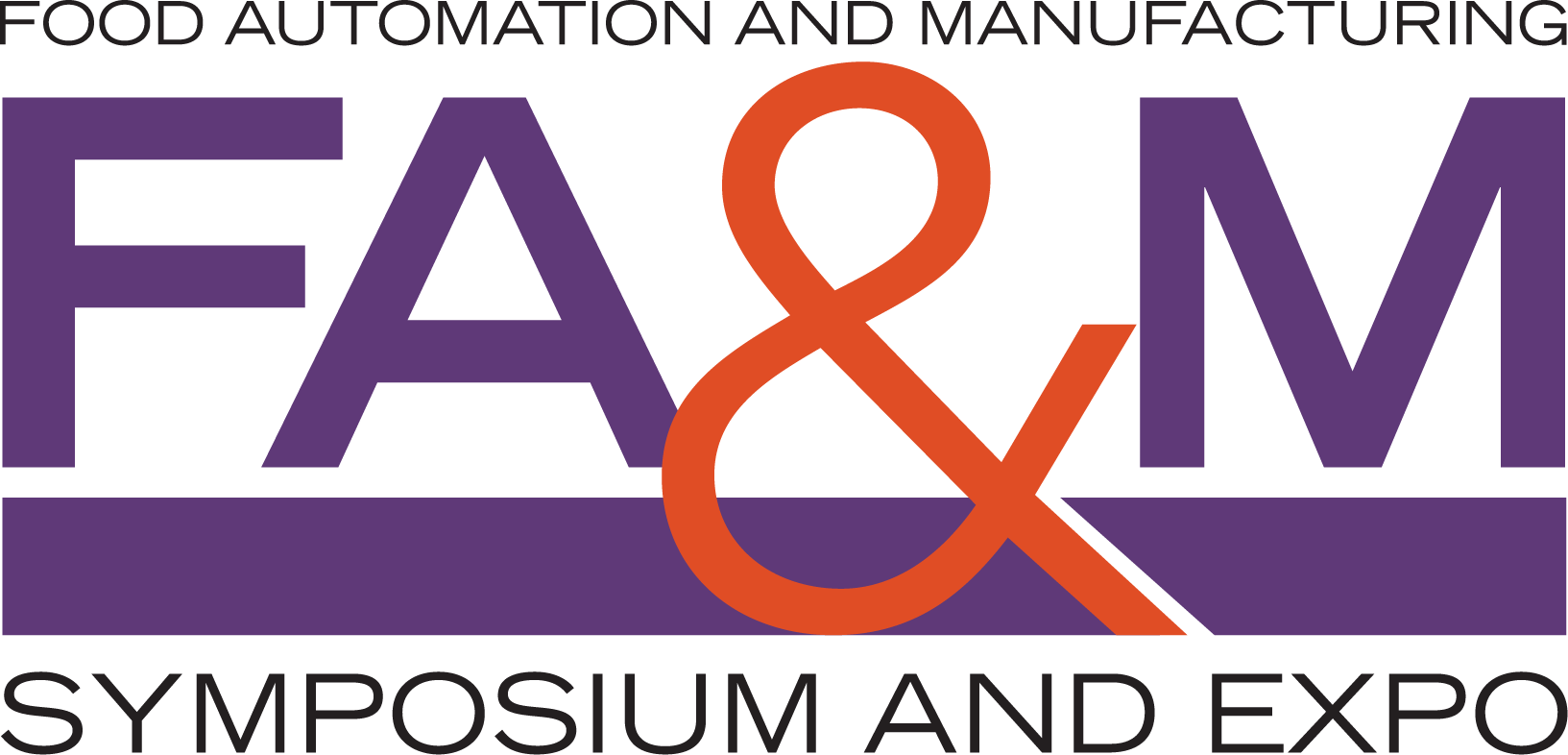FA&M Recap
FA&M gathers food processors and suppliers together for education and exhibits

In the Miami sunshine, processors and suppliers take advantage of abundant time for casual conversations at FA&M.

Valley Milk CEO Patti Smith, Valley Milk employees and representatives from Shambaugh & Son accepted the 2019 Food Engineering Plant of the Year award.

A panel discussion of women in food manufacturing focused on the challenges women face and how the industry can get more girls and young women interested in technical and engineering careers.
Jump To:
Takeaways from Solutions Theaters
As always, this year’s FA&M featured our popular Solutions Theater presentations, which are smaller breakout sessions that allow companies to present their solutions directly to attendees and answer question.
The Solutions Theaters allow for attendees and companies to discuss the challenges faced by processors every day and explore ways to meet those challenges.
FE editors provide a brief synopsis of what the Solutions Theaters addressed this year.
Keep bacteria out of conveyor drives
Presented by Van der Graaf
Speaker: Alex Kanaris, president, Van der Graaf
If you’ve worked in a chicken plant or seen meat come down conveyors, you know how much fat and debris can build up around sprockets and motor drives.
For decades, drum motors from Van der Graaf have boosted sanitary operations of conveyors in numerous plants, especially ones with high bacteria levels, such as poultry facilities.
The company’s SSV sanitary series drum motors are built around the idea of keeping bacteria out. The conveyor drives are an all-in-one, compact design with the motor, gear drive and all moving parts protected inside the sealed drum. Workers won’t get hurt on external moving parts typical of a conventional drive, and pathogens aren’t getting inside.
“It’s away from the environment. The environment does not harm the drive,” President Alex Kanaris told the audience.
As the company likes to say: “The SSV sanitary drum motor leaves no place for bacteria to hide.”
The motor and gears operate in an oil bath, ensuring proper lubrication and cooling. The belt profile is machined directly onto the drum, working with modular, wire mesh and thermoplastic belts. VDG cites other advantages: energy reduction, free of maintenance, low noise level, faster washdown and longer life.
The company started offering in the past year its next-generation IntelliDrive drum motor that is Ethernet and MODBUS ready to wirelessly vary speed and analyze how the motor is running. It uses a permanent magnet motor that provides about 70% electrical savings without loss of torque.
Incentives for food manufacturers
Presented by Development Advisors
Speaker: Zach Kimball, managing director, Development Advisors
Whether you’re building a greenfield facility or expanding your current site, you can’t afford to overlook the incentives that may be available to you in tax abatements—or better yet—cold hard cash. These incentives can come from local or state governments, ports, railroads and utilities.
Can you do this research yourself? Maybe if you’re Amazon.com. However, if you go it alone, it’s likely you could miss out on some opportunities you didn’t know were available. Zach Kimball, managing director at Development Advisors, provided some tips to processors who are in the process of site searches. While you may know the mayor, county commissioner(s) or the governor, incentive funds are usually under the management and control of housing and economic development groups (county or state), and that’s where processors need to start their search for incentives, Kimball said.
Development Advisors intercedes between manufacturers and state and/or local governments to locate funding that in many cases processors don’t even know exists—even if all they’re doing is CAPEX improvements. For example, Kimball has seen manufacturers spending tens and hundreds of millions of dollars year over year in just routine CAPEX investment in plants and not getting a single dollar back in incentives. Kimball emphasized “packaging a project,” which means listing new jobs, average wages and any needed hard infrastructure (roads, water, sewer, rail sidings, etc.) that can be offset partially or fully with incentives.
An overlooked way to cut energy costs
Presented by Calpine Energy Solutions
Speaker: Sarah Johnston, Powerfolio community services director, Calpine Energy Solutions
Many businesses lump energy purchases in with buying supplies like paper.
But they’ll miss out on savings with that mindset, says Sarah Johnston, Powerfolio commodity services director, Calpine Energy Solutions.
Food companies, particularly those in states that allow a choice in energy providers, should push aside the thinking that they’re simply buying gas and electricity, she says. Instead, they need to understand that they’re managing a portfolio of financial exposures.
That shift in thinking about managing energy “changes the way it’s thought about by the organization and changes the way it’s managed by the organization,” she says.
The price difference will become clear when your company examines: when you buy gas or electricity, how long you buy for and how much you buy.
“There are times, depending on market, depending on what you do strategically, this can easily equate to a 20% difference or more in your energy spend.”
Calpine Energy Solutions, among the five-largest U.S. retail energy providers, works with 1,300 clients to analyze their risks and find savings, typically focused on companies with complex footprints or with significant enough energy spending to warrant strategic portfolio management.
Industry 4.0 with Valves and Sensors
Presented by Burkert Fluid Control Systems
Speaker: Curtis Bares, team manager hygienic and water, Burkert Fluid Control Systems
Automation began with steam power and mechanization, now known as Industry 1.0, and was followed by mass production—thanks to the assembly line and electricity (Industry 2.0). In the 1980s, computers and automation (Industry 3.0) set the stage for what we know as Industry 4.0, a world of cyber-physical systems and the internet, said Curtis Bares, team manager hygienic and water, Burkert Fluid Control Systems.
Today’s Industry 4.0 design principles include interoperability, information transparency, technical assistance (i.e., the ability of a device to provide self-diagnostics or to support humans with performing exhausting or unsafe tasks), and decentralized decisions (the ability of cyber physical systems to make their own decisions within predefined boundaries).
Where is all this technology leading in terms of plant floor devices? Bares explained, “We want the device not to require any human interaction; we want the device—whatever it may be— eventually to say, ‘I’m wearing out and I will fail soon, and I need to order spare parts right now.’ And that order gets placed in whatever system you have, and when it ships, it comes tagged with where it needs to go in the plant.”
Most important, Bares advised, no matter where you plan to go with networking strategies, be sure to have a literal map (diagram) of your current network architecture so you have control over future additions and know what’s going on when a problem arises. When a digitally operated valve is sluggish or stops working, it may not be an actual mechanical problem at all, but the fault of extreme network loading on a poorly planned network.
Need to customize? Automation, machines that adapt will help
Presented by ABB
Speaker: Todd Gilliam, U.S. food and beverage leader, ABB
Food companies are trying to please shoppers that like “rainbow packaging” of products in varied assortments. Think of 12 sodas in different flavors or a custom mix of chocolates.
Businesses face numerous challenges, such as increased downtime, to produce more limited edition varieties in customized packaging. With automation advances to help with short runs and mix-and-match packaging, the industry is close to the ultimate goal of a batch size on one, says Todd Gilliam, U.S. food and beverage leader for ABB, the global technology, robotics and machinery company.
He shared an overview of available automation technologies and adaptive machines with the food manufacturing engineers and executives at the conference who grapple with how to adjust to shorter product cycles and frequent launches. Here are Gilliam’s insights about a couple types of machines that will help:
Collaborative robots
Food companies will get the full benefits of the “factory of the future” when they use robots to work with people and connect those robots to a plant’s broader digital ecosystem.
Adaptive machines
These machines allow plants to add track segments and stations, as a more affordable alternative to adding machines or replacing outdated equipment. They’re needed for the “fourth generation of packaging,” requiring mass customization without sacrificing efficiency.
Different pieces and parts make up the line, as opposed to a traditional long conveyor run with accumulation tables, which requires working around bottlenecks and constraints, Gilliam says.
“You basically have a modular build-it-as-you-need approach. Think of a Lego type of concept of piecing together the different curves and elbows and straight runs … Let the machine adapt to the production and not the other way around.”
The Power of the IoT and Advanced Analytics
Presented by ei3 Corporation
Speakers: Patrick Donoghue, senior solution sales engineer, Lenze, and Craig Rowles, executive vice president, ei3 Corporation
Data-driven manufacturing purports to create some really big savings—for example, 10-20% reduction in the cost of quality; 10-40% reduction in maintenance costs; 30-50% reduction of total machine downtime; and a 3-5% increase in productivity. But are these numbers realizable?
In a former manufacturing position, Craig Rowles, executive vice president of ei3 Corporation, says his company had achieved goals like these by applying lean principles and analytical software tools. Now with ei3, he wants to help other manufacturers achieve these goals, and there is keen interest from processors in chasing after them.
Imagine a precision cutting/slicing machine, which is an integrated component within a production/packaging line. While the local technicians can fine-tune the machine to keep its blades in alignment (takes a half-hour to an hour), if the cutting blades go severely out of alignment, causing them damage, then the machine has to be shut down. Because of the complexity of the machine, no one on site can fix it. So either the contractor or OEM has to come in and fix it. Meanwhile, the machine and the line could be down for a couple of weeks.
“You can prevent that from happening; it takes about half an hour to an hour to realign the blades and get it up and running again,” says Rowles. He played an audio recording of a properly running cutting system and then the sounds of the blades going out of alignment, headed toward catastrophic failure. Solution to the problem: Install a microphone, analyze the sounds, record and process the data—and let technicians know when to fine-tune rather than have the machine break completely and halt production.
Constructing a “digital twin” or model of the machine using digital transformation creates a path to predictive maintenance (PdM) in six steps: connect machines, monitor machine data, track KPIs and downtimes, do a data science analysis in the cloud, process stream data to send alerts, and finally, create a predictive maintenance business model that can be applied to real-world systems.
“The cost of implementing IIoT is far less than the cost of a [staff] person, and the monthly fee is roughly like paying your cell phone bill,” says Patrick Donoghue, senior solution sales engineer, Lenze, a machine builder and user of ei3’s PdM solution. Once such a system is implemented, it multiplies the capabilities of the people who are on staff, a must considering how difficult it is to find technically qualified people, Donoghue added.
Maximize value with optimized scheduling
Presented by OptTek
Speaker: Marco Better, vice president of analytics, OptTek
Why optimal production scheduling? Maybe for any or all of the following issues: The executive board says we’re not hitting our ROI, and we need to improve it. Manufacturing says there are too many changes and disruptions on the shop floor; we’re not working as efficiently as we can. Sales calls and says our on-time delivery is slow; we need to improve that. Engineering says we designed those machines to run continuously, and we have stoppages, changeovers and disruption. Finally, finance says sales are down; we need to increase throughput. How does a production scheduler meet these goals all at once? asks Marco Better, OptTek vice president.
“We need optimal production scheduling,” Better says. It would appear that in order to increase throughput, you need to invest in additional capacity, labor and technology. What if there were a technology that would allow you to increase throughput without increasing costs? And that shift could be sustainable permanently—not just one time. “That’s what we propose with optimal production scheduling,” says Better.
In order to do this, three things need to happen. First, jobs need to be sized, and batches/production runs need to be created. Second, the production runs need to be assigned to different production lines, machines and resources. Finally, those jobs need to be sequenced optimally on each line in order to achieve a set of objectives, which could be maximizing throughput, minimizing operating costs, minimizing changeovers, etc. Some of these objectives, however, are in conflict with each other.
Optimal production scheduling—in order to maximize quantity produced (throughput)—requires several mathematical formulas to describe, for example, assigning batch runs to production lines, setting maximum inventory limits, setting minimum inventory limits, creating sequencing variables, sequencing batch production on each line and limiting production time on each line, Better explains.
Click here for a word from FA&M's sponsors
Click here for a list of companies that exhibited at the show
Looking for a reprint of this article?
From high-res PDFs to custom plaques, order your copy today!






